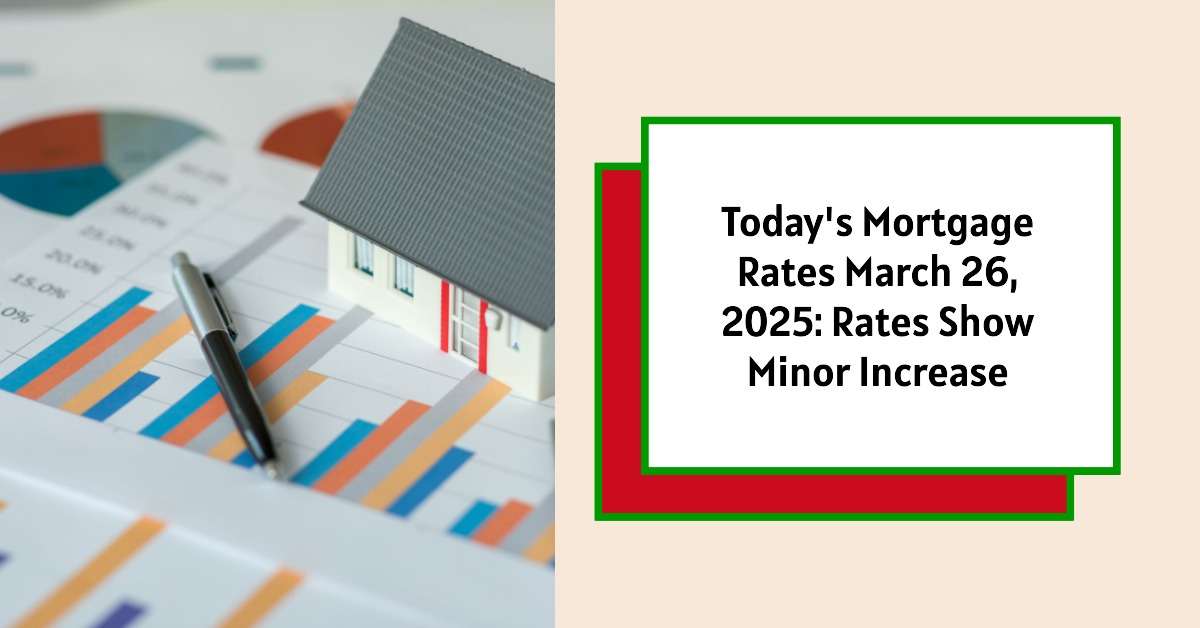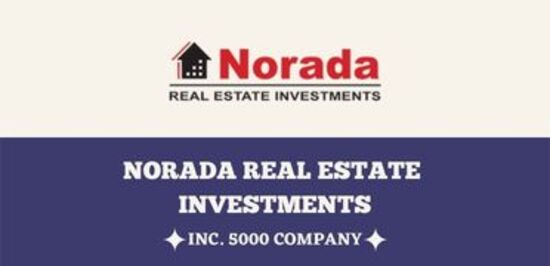As of today, March 26, 2025, the mortgage rates across the nation are showing minor upward movement in some areas, while others remain stable. According to the latest data from Zillow, the average 30-year fixed mortgage rate has slightly increased to 6.61%. Similarly, refinance rates are also exhibiting similar trends. For those looking to buy or refinance, understanding these subtle shifts is key.
Today's Mortgage and Refinance Rates, March 26, 2025: Staying Steady
Key Takeaways:
- The average 30-year fixed mortgage rate is currently at 6.61%, a slight increase.
- The 15-year fixed mortgage rate remains unchanged at 5.97%.
- Refinance rates for a 30-year fixed loan are averaging 6.62%.
- Experts suggest that significant drops in mortgage interest rates are not expected in the near future.
- Focusing on improving personal finances and comparing lenders remains crucial for securing the best possible rate.
Current Mortgage Rates: A Closer Look
Getting a handle on the current mortgage rate environment is the first step for anyone considering buying a home. These rates significantly impact your monthly payments and the total amount of interest you'll pay over the life of your loan. Let's break down the specifics based on the latest data.
According to Zillow's data, here's a snapshot of the national average mortgage rates as of March 26, 2025:
| Loan Type | Interest Rate |
|---|---|
| 30-Year Fixed | 6.61% |
| 20-Year Fixed | 6.38% |
| 15-Year Fixed | 5.97% |
| 5/1 ARM | 6.91% |
| 7/1 ARM | 6.95% |
| 30-Year VA | 6.14% |
| 15-Year VA | 5.69% |
| 5/1 VA | 6.18% |
It's interesting to note that while the 30-year fixed rate has seen a small uptick of three basis points, the 15-year fixed rate has held its ground. This subtle divergence highlights the nuanced nature of the mortgage market where various factors influence different loan types. Adjustable-rate mortgages (ARMs), such as the 5/1 and 7/1 ARMs, currently show slightly higher average rates compared to even the 30-year fixed, a situation that doesn't always hold true and emphasizes the importance of consulting with lenders.
Today's Mortgage Refinance Rates: What You Need to Know
For homeowners looking to potentially lower their monthly payments or shorten their loan term, understanding today's mortgage refinance rates is just as important. Refinancing involves taking out a new loan to pay off your existing mortgage. The attractiveness of refinancing hinges on whether you can secure a new interest rate that is lower than your current one, or if your financial goals necessitate a change in loan terms.
Here are the average national mortgage refinance rates as of March 26, 2025, also based on Zillow's data:
| Loan Type | Interest Rate |
|---|---|
| 30-Year Fixed | 6.62% |
| 20-Year Fixed | 6.37% |
| 15-Year Fixed | 6.02% |
| 5/1 ARM | 6.70% |
| 7/1 ARM | 6.82% |
| 30-Year VA | 6.15% |
| 15-Year VA | 5.81% |
| 5/1 VA | 6.28% |
| 30-Year FHA | 6.12% |
| 15-Year FHA | 6.04% |
As you can see, in some instances, the refinance rates are slightly higher than the rates for purchasing a new home, particularly for the 30-year fixed option. However, this isn't a universal rule, and other factors like your individual financial profile and the specifics of your existing loan play a significant role. Interestingly, the rates for FHA loans are also provided in the refinance data, offering options for homeowners with these types of mortgages.
Factors Influencing Today's Mortgage Rates
Several interconnected elements within the broader economic climate contribute to the levels we see in today's mortgage rates. While predicting future fluctuations with absolute certainty is impossible, understanding these drivers provides valuable context.
One of the primary influences is the Federal Reserve's monetary policy. The Fed doesn't directly set mortgage rates, but its actions, such as adjusting the federal funds rate and its involvement in the bond market, have a ripple effect. Changes in these areas can impact the yield on Treasury securities and mortgage-backed securities, which in turn affect the interest rates lenders offer to consumers.
Recommended Read:
Mortgage Rates Trends as of March 25, 2025
Mortgage Rates Drop: Can You Finally Afford a $400,000 Home?
Expect High Mortgage Rates Until 2026: Fannie Mae's 2-Year Forecast
The overall health of the U.S. economy also plays a crucial role. Factors like inflation, employment rates, and economic growth can influence investor confidence and the demand for bonds, ultimately impacting mortgage rates. For instance, periods of high inflation often lead to higher interest rates as lenders seek to protect their returns.
Furthermore, the demand for housing and the supply of available homes can exert pressure on mortgage rates. A strong housing market with high demand might lead to slightly higher rates, while a slowdown could have the opposite effect.
It's also worth noting that global economic events and investor sentiment can introduce volatility and influence the direction of interest rates, including those for mortgages.
What Will Your Estimated Monthly Mortgage Payment Be Today?
Monthly Payment on $150k Mortgage
For a $150,000 mortgage with the current average 30-year fixed mortgage rate of 6.61%, your estimated monthly payment would be approximately $962. This calculation includes only the principal and interest. Factors like property taxes, homeowners insurance, and potentially private mortgage insurance (PMI) could add to this amount.
Monthly Payment on $200k Mortgage
Taking the same 30-year fixed mortgage rate of 6.61%, a $200,000 mortgage would result in an estimated monthly payment of around $1,283 for principal and interest. Again, remember that additional housing-related costs will increase the total monthly outlay.
Monthly Payment on $300k Mortgage
If you were to take out a $300,000 mortgage at today's average 30-year fixed rate of 6.61%, your estimated principal and interest payment would be in the neighborhood of $1,925 per month. This illustrates how the loan amount directly impacts your monthly financial obligations.
Monthly Payment on $400k Mortgage
For a $400,000 mortgage at the prevailing 30-year fixed rate of 6.61%, the estimated monthly payment for principal and interest would be approximately $2,567. This figure underscores the significant financial commitment involved in purchasing a home at this price point under the current rate environment.
Monthly Payment on $500k Mortgage
With a $500,000 mortgage and today's average 30-year fixed rate of 6.61%, you can expect a monthly payment of roughly $3,209 for principal and interest. This highlights the importance of carefully considering affordability and long-term financial planning when taking on a mortgage of this size.
It's crucial to understand that these payment estimations are based solely on the principal loan amount and the interest rate. When budgeting for a mortgage, you'll also need to factor in property taxes, homeowners insurance, and PMI if your down payment is less than 20% of the home's purchase price. These additional costs can substantially increase your total monthly housing payment. Using a comprehensive mortgage calculator, it can provide a more accurate estimate by including these variables.
Navigating the Current Mortgage Landscape
Given that significant drops in mortgage rates aren't anticipated in the immediate future, prospective homebuyers and those considering refinancing should focus on what they can control. Boosting your credit score can lead to more favorable interest rates. Lenders view borrowers with higher credit scores as lower risk, and this is often reflected in the terms they offer. Reducing your debt-to-income ratio (DTI) is another important step.
A lower DTI indicates that you have a manageable amount of debt compared to your income, making you a more attractive borrower. Saving for a larger down payment can also be beneficial, as it might help you avoid private mortgage insurance (PMI) and could potentially lead to a slightly lower interest rate.
Furthermore, it's essential to shop around and get pre-approved by several different lenders. Each lender might offer slightly different rates and fees, and comparing these offers can potentially save you a significant amount of money over the life of your loan. Applying for pre-approval also gives you a clearer picture of how much you can afford and strengthens your position when making an offer on a home.
The market for mortgage rates is dynamic, influenced by a complex interplay of economic factors. While we've seen a minor upward drift in some rates today, the overall picture suggests a period of relative stability. For individuals navigating this environment, a proactive approach focused on financial preparedness and diligent comparison shopping remains the most effective strategy for achieving their homeownership or refinancing goals.
Work With Norada, Your Trusted Source for
Real Estate Investments
With mortgage rates fluctuating, investing in turnkey real estate
can help you secure consistent returns.
Expand your portfolio confidently, even in a shifting interest rate environment.
Speak with our expert investment counselors (No Obligation):
(800) 611-3060
Also Read:
- Will Mortgage Rates Go Down in 2025: Morgan Stanley's Forecast
- Mortgage Rate Predictions 2025 from 4 Leading Housing Experts
- Mortgage Rates Forecast for the Next 3 Years: 2025 to 2027
- 30-Year Mortgage Rate Forecast for the Next 5 Years
- 15-Year Mortgage Rate Forecast for the Next 5 Years
- Why Are Mortgage Rates Going Up in 2025: Will Rates Drop?
- Why Are Mortgage Rates So High and Predictions for 2025
- Will Mortgage Rates Ever Be 3% Again in the Future?
- Mortgage Rates Predictions for Next 2 Years
- Mortgage Rate Predictions for Next 5 Years
- Mortgage Rate Predictions: Why 2% and 3% Rates are Out of Reach
- How Lower Mortgage Rates Can Save You Thousands?
- How to Get a Low Mortgage Interest Rate?
- Will Mortgage Rates Ever Be 4% Again?


